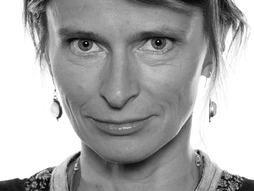Otherworldly photos that show us what our religions have in common
After decades spent documenting faith communities around the world, photographer Monika Bulaj understands that our religions are more similar than we realize.
Continue reading
Monika Bulaj is a photographer and writer who explores -- in Asia, Africa, Latin America and Eastern Europe -- the dim areas of monotheism, where the sacred can transcend borders: Bonfires, dances, cults of the dead, possession rites. She describes outskirts and deserts, frontiers and megalopolis. And the world of the last ones: nomads, farmers, immigrants, outcasts, untouchables and impure.
Her photos and reportaging have been published by GEO, National Geographic (Italy), La Repubblica, periodicals by Gruppo Espresso and Rcs, Courrier International, Gazeta Wyborcza (Poland), Internazionale, Freundin, Teatr (Poland) and other international magazines.
She has displayed more than 50 personal exibitions in Italy, Germany, Ungheria, Bulgaria, Egypt.
Her books include Libya felix, a travel into Sufism and the world of the Tuaregh; Figli di Noè, on minorities and faiths in Azerbaijian; Rebecca e la pioggia, on the nomadic tribe of the Dinka of South Sudan; Gerusalemme perduta with Paolo Rumiz, the special correspondent of La Repubblica, on the pellegrinage in the research of the Eastern Christians; Genti di Dio, viaggio nell'Altra Europa, a synthesis of 20 years of research in East Europe and Israel, and her latest book, Bozy ludzie.
She has screenwritten documentaries, among which is the movie Romani Rat (2002) by M. Orlandi, on the Holocaust of the Roms, with the contribution of the Shoah Visual History Foundation. She's the director, photography director, and screenwriter of the documentary Figli di Noè, about the villages of Caucasus on the border between Dagestan and Azerbaigian.
Bulaj is a TED Fellow. Read TED's Q&A with Monika Bulaj >>
After decades spent documenting faith communities around the world, photographer Monika Bulaj understands that our religions are more similar than we realize.
Continue reading